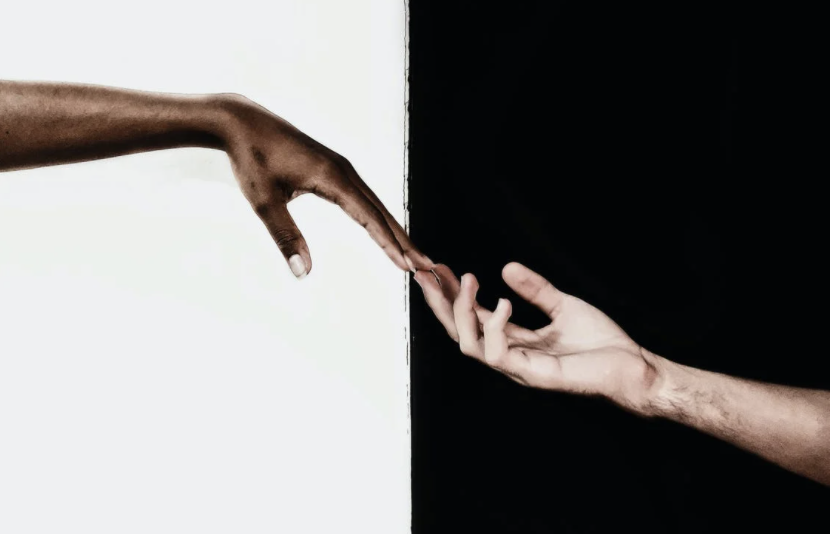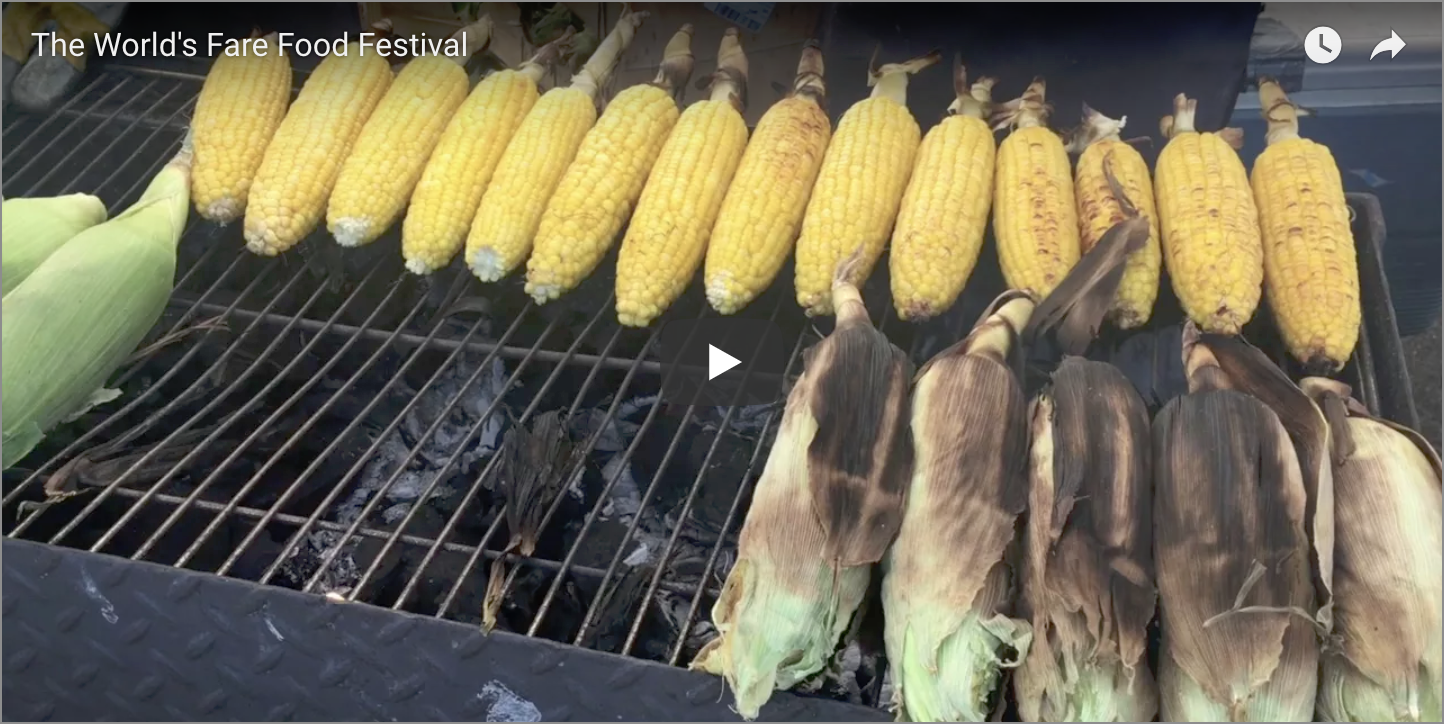
Why Your Altruism Is Fake and How We Can Create a World Where It Is Real
By Sadaf Ayaz
When I asked Neha Aamir, a mental health therapist at Johns Hopkins Bayview Medical Center, why people volunteer, she turned the tables on me.
“When you engage in altruistic behavior, why do you?”
It took me an hour to come to an answer. I thought back to some of my recent “acts of altruism” and asked why?
But really, why?
I told her I did it because I learned to be altruistic from my parents who often go out of their way to help others. Aamir shut this explanation down quick, she said that’s an example of social responsibility—my parents are altruistic because it’s the responsible or right thing to do, and I follow their example as a form of learned behavior from social modeling that is often inspired by parental figures, and usually enforced by social norms.
But that was before, I tell her. Now I do it because I want to define myself as the type of person who helps others. It’s a conscious effort I make every time I choose to practice altruism. But Aamir has an explanation for this, too: these are my moral values coming into play.
In both cases, Aamir says there’s a reason for my altruism. I always gain something, whether that prize is tangible or not. And the “something” I gain goes against the definition of altruism: a selfless act done without expecting anything in return.
“Often when people do something without expecting anything in return, they are actually getting something in return, even if not physically,” Aamir said, “they’re feeling good about it. And that’s their reward.” This reward, an influx of dopamine release from the substantia nigra of our brain, is the single biggest motivating factor. This feel-good neurotransmitter not only helps us see a reward but entrances us into taking an action to move towards it—whether that’s drugs, sex, or being a good human being. Yep, you can get the same high from helping a homeless person as you can from sex. Okay, maybe not the same high—but definitely the same excited neurological pathway.
And that’s why some psychologists argue that true altruism doesn’t exist.
* * *
Human intention is complex. Its subjective nature opens up infinite possibilities, which is why psychology and philosophy both struggle to understand why people volunteer. It’s also why you may never know your own true motives.
Fundamentally, scientists believe altruism is a contradictory trait, one that goes against evolution. Survival of the fittest makes being selfish our number one asset, so, when the costs and benefits of altruism are measured in terms of reproductive fitness or the amount of offspring produced, the costs of altruism greatly outweigh the benefits. Animals that act altruistically reduce their number of offspring by risking their own lives to help others. The reality is, altruism is a non-transferable gene and does little good for us in the larger scheme of evolution.
Despite that, we tread on the treacherous waters of altruism and biology remains helpless in understanding why.
Scientists have tried to study altruism through neurological pathways involved in internally guided decision making—decisions made based on subconscious moral preferences—but the results are full of blurry lines and inconclusive data. PET scans of people’s brains when deciding to be altruistic show a fully active brain in various hues of the heatmap, but with no discernible or reproducible pattern.
So I took a turn away from science for a bit to ask people what lead them to be altruistic.
“Because I wanted to be nice.”
“Because I felt bad.”
“Because it feels good.”
“Because it felt right.”
“Because I could.”
“bEcAuSe I oWeD iT tO tHe WoRlD.”
“Because…because…I don’t know. I just did it.”
For many of us, altruism is a choice we make in the moment, a split decision, but for some people, it’s their life. Psychologists have found a trend in the upbringing of some of the most altruistic individuals around the world, individuals who gave up everything to lead a selfless lifestyle.
When Larissa MacFarquhar decided to study extreme altruists for her book “Strangers Drowning,” she found that several of her subjects had become altruistic as a result of parentification, a process of role reversal where, because of the absence of parents or the inability of parents to fulfill their familial responsibilities, a child takes on the responsibility of a parent. These children often take care of the emotional, physical, and financial well-being of their siblings, and sometimes even their parents.
Extreme altruists literally live with the weight of the world on their shoulders. Some of them may donate more than half their income, adopt 20 kids, or live their whole lives in a third world country helping others. Some may even donate an organ to a stranger, or choose to enter a country in the middle of a war or an epidemic in order to save lives. When everything tells them to run away from a fire, they feel an overbearing obligation to run towards it.
Aamir, the Johns Hopkins therapist, believes altruism may be a healthy coping strategy for these individuals, but ultimately they are filling a void. “A void is something missing and if you are trying to replace that void or cover it with other things, then you’re not really dealing with deeper issues,” Aamir says. “Instead you’re just putting on a temporary band-aid. A void should be looked into, and doing purposeful work should be in addition to working through the void, rather than just trying to feel better because you are doing altruistic things.”
While few of us practice extreme altruism, Aamir stresses the importance of taking a moment to reflect on the “Why?” behind our tiny acts of generosity. “If we’re not conscious, our altruistic acts can be feeding our ego, which would make us quite selfish and narcissistic,” Aamir said.
Dr. Craig Malkin, a psychologist at Harvard Medical School and author of “Rethinking Narcissism,” agrees with Aamir. He believes narcissists surround us in all forms. A communal narcissist is an altruistic person who is too proud of their role as a giver. This person could be found saying to themselves something like, “I am the most helpful person I know,” or “I will be well known for the good deeds I have done.” Malkin, though, believes narcissism isn’t entirely bad. He believes that what he calls positive or healthy narcissism is an essential trait that enables us to develop a strong sense of self-esteem and confidence.
During adolescence, children need their parents to make them feel special. At the same time, children also have a psychological need to view their parents as perfect. For this reason, narcissism is at its highest during adolescence, mostly as a protective measure. If a kid is being bullied at school but feels special and secure at home, the bullying won’t be as damaging to his or her personality. Over time, children begin to realize that they aren’t as special as they thought they were, and that no one, not even their parents, is perfect, and that’s okay. The result is healthy narcissism.
Dr. Malkin recommends the best way to cultivate positive narcissism in children is to involve them in volunteering activities at an early age. Children and adolescents not only develop confidence and empathy by working with other people but are also given an opportunity to feel good about themselves from something other than high grades and trophies. “Giving provides everyone with a rush,” Dr. Malkin says.
This may be one of the notions behind the high surge of volunteering in Americans today. A study by the Corporation for National & Community Service discovered that one out of four Americans volunteer. For some older individuals some studies show that volunteering reduces mortality risk by 24% by strengthening the body, improving mood, and lessening stress in participants. Be warned though: Eric Kim, a doctoral candidate studying the relationship between social connection and physical health at the University of Michigan, says, “Only the people who were doing it for more outward reasons—compassion for others—had reduced rates of mortality.”
* * *
In 1997, Roslyn High School required students to have at least 30 hours of service in order to graduate, and currently students are expected to have at least 60 hours.—this has now become a nationwide requirement with different quotas for different schools.
Companies and organizations that are aware of these quotas see an opportunity for free labor in the form of students. In fact, volunteerism in America is valued at over $184 billion and according to an Independent Sector study, volunteers are worth an average of $24.14 an hour, a cost organizations and companies who involve volunteers get to waive. Yet, in many cases, the incentives for volunteering are not even remotely altruistic. For adults, volunteering can be a stepping stone to a permanent job with a politician or non-profit; indeed, people whose resumes include volunteer work have a 27% higher chance of gaining employment.
For students volunteering is often mandatory, making it a bit of an oxymoron.
The National Honors Society, a prestigious high school club, requires 60 hours of student volunteering to join; many college advisors suggest students put in 100 or more hours volunteering to buff up their college applications; and 200 or more clinical, non-clinical, and research hours are suggested to be a competitive applicant for medical schools.
High School students aware of the benefits of volunteering find themselves involved in sometimes meaningless volunteering activities, rather than to check boxes and sometimes fulfilling and life-changing experiences.
Huda Ayaz suffered through what she feels was a meaningless experience when she volunteered last summer at a hospital on Long Island. Although her internship program had promised her clinical hours and patient interaction, Ayaz only had one experience the entire summer that involved actual patient interaction—and that was a game of UNO. She says she knew her experience was unlikely to be a fullfilling one when her manager handed her a stack of papers to organize and told her to “make the hours last,” as in fill up a lot of time.
Suzanne Gluck, Ayaz’s guidance counselor at The Wheatley School in Old Westbury, says, “I always try to remind students that none of the work is meaningless that there is always a learning experience from each volunteering opportunity.” Gluck believes volunteering for high school students should be organic in nature and the opportunities should be meaningful to the students. But students already struggle to find meaningful volunteer opportunities in high school and it doesn’t get any easier in college.
Sam George, a student at Hunter College, found himself in a similar situation when he was a volunteer Research Associate at an Emergency room at NYU Langone Hospital in Brooklyn. His orientation was full of all the right keywords that made it feel like it was going to be an opportunity of a lifetime: hands-on experience in clinical research, the chance to follow a real doctor—to become one with his shadow—and the opportunity to personally enroll patients in break-through studies.
George spent months walking down the halls of the Emergency Room eagerly waiting for those moments—the parts where he would feel like it was hands-on, or that he was really a part of the hospital’s healthcare team, awaiting that one encounter that would jump-start his medical career. But it never came.
George’s months as a college intern were spent trying to convince already frustrated patients to fill out surveys on what they thought about the hospital when all they wanted to know was when the doctor would see them. He didn’t get to “personally enroll” patients and he definitely wasn’t able to “become one with the doctors’ shadow” in the way he was told he would: the only memorable experience he did get was being completely ignored by all of them.
“I understood that my only role was to perform a meaningless task that no one else on the clinical research teams wanted to do,” George said. “This not only makes volunteers feel undervalued but also perpetuates a system where volunteers are consistently exploited as free labor. Because of this, many volunteers forget the initial reasons for why they wanted to volunteer in the first place and regard volunteering as another meaningless addition to their resumes.”
George left the program at NYU Langone Hospital in pursuit of another that would give him the opportunity to grow, and the Cardiac Stepdown unit in NYP-Weill Cornell Medical Center gave him exactly that. “It was one of the most profound volunteering experiences I’ve had,” George says. “I got to interact with patients and their families, pre- and post-surgical care, and developed life-changing relationships with many of the patients who were in the hospital for a long time.”
* * *
Raquel Suarez, a program administrator from the Touro College of Osteopathic Medicine in Harlem, says she values applicants who may not be academic whizzes but have demonstrated the capacity to empathize and help others through their volunteering activities. She says the programs they volunteered with don’t matter as much as the growth they are able to articulate from their experiences. “I think these students make great doctors because treating human beings is not just about knowing the diagnosis,” she says. “It’s about being able to interact with vulnerable patients and to be able to cater to their emotional as well as their medical needs.”
Both Suarez and Kemile Jackson, the main pre-health advisor at Hunter College, warn students against engaging in activities for the wrong motives, like meeting quotas. “If students aren’t genuine, it catches up at the end,” Jackson said. “The admissions committees aren’t stupid. They can figure out if a student is being genuine or ingenuine, especially if they can’t articulate why they did something.”
Jackson believes empathy and compassion are characteristics that need to be developed, and that is problematic when students think they are being altruistic and are developing empathy when in fact, they aren’t. It’s like giving yourself a hearty pat on the back for doing nothing. Soon enough, you get into a boy who cried wolf situation with yourself: you think you’re an altruistic person, but when you actually need to be altruistic, your emotional intelligence fails you.
Still, a study by the University of Nebraska Omaha found that even “meaningless” volunteering plays a positive role for students in the long run. It found that students benefit equally from volunteer opportunities, whether they were forced or chose to volunteer, resulting in a better sense of responsibility, higher self-esteem, and increased social relatedness.
* * *
DoSomething.Org is an online platform for connecting students with volunteering opportunities. CEO Aria Finger says her organization aims to change the future of their members by creating a more socially conscious and active generation by making volunteerism fun.
Finger believes younger folks are motivated to change the world but can only really develop the skills necessary if they have fun volunteering. “We make volunteerism something you can do with your friends, anywhere,” she said. “We want kids to see themselves having a good time. So it’s a win-win-win. You keep coming back and doing it again and again.”
Similarly, Joshua Lafazan, the youngest elected Legislator in Nassau County at 25 years old, was able to involve 125 student interns in his campaign this summer. The interesting thing about his campaign? Everyone is welcome to join the family (his youngest intern is 8 years old) and there’s only one rule: no one gets coffee.
“Young people have unlimited potential but have limited opportunity,” Lafazan said. “When I was younger, my friends would lament to me that they were working in positions where their sole role was to get coffee or wait for the phone to ring. They had unlimited potential to make a difference and in addition to intellect they had a drive, but their skills were misused.”
Lafazan believes today’s young people are the largest, most diverse, and most educated generation in the history of the country, yet they’re also the most underrepresented. He makes sure to give young people a seat at his table. But Lafazan’s colleagues in government on Nassau County often criticize his naivete for involving kids who are too young. But Lafazan takes the criticism with a smile on his face.
“I say to them that at 18 years old, I asked the community to take a chance on me and they did,” he said referring to when he was elected as the youngest trustee on the Syosset Board of Education, winning with an 82% vote. “At 23, I asked them to take a chance on me again and they did. How am I going to be the guy who doesn’t take a chance on a young person?”
A study by the University of Houston-Downtown believes these opportunities help younger people become more conscious and active citizens in the future. They are more likely to vote and use their voice in government. They are also twice as likely to donate to charity than those who don’t volunteer.
These kids may grow up to have real answers for why they volunteer and while they may not all be true acts of altruism since they will also be getting something out of it, it’s still a win-win situation that leads to a better world for us all to live in.
Altruism is just one of those things: if you aim for the moon and miss, you still might land on the stars.




